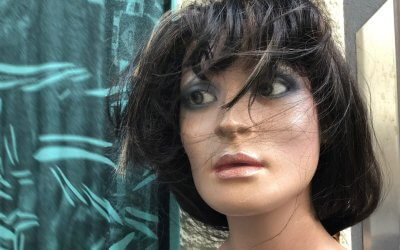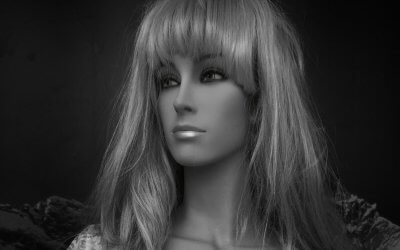Trustworthy Body Language. Trust, Dignity and Body Language
Do you know that your body language communicates what is in your interest?
Trust and body language
How do you know that your body language communicates what is in your interest?
Each presentation is also a self-presentation.
Karsten Noack
The impact of body language
He who hurries can not walk with dignity.
This Chinese proverb underlines what we know of body language. And there is a lot more to say about it.
Oftentimes, what comes out of our mouths and what we communicate through our body language are two different things. When faced with these mixed signals, the listener has to choose whether to believe your verbal or nonverbal message. In most cases, they’re going to choose the nonverbal.
We do this because it’s a natural, unconscious language that broadcasts our true feelings and intentions at any given moment.
When we interact with others, we continuously give and receive wordless signals. The way you listen, look, move, and react tells others whether you care, if you’re being truthful, and how well you’re listening. Are you sure that your body language communicates what you intend?
Trustworthy body language
Here are some elements of trustworthy body language:
1. Open body language
Open body language is a common cluster of moves that is non-aggressive and trusting, showing that you are relaxed and comfortable.
a. No barriers
Avoiding barriers is the first step in projecting positive body language. Remove all the barriers between you and others. Barriers include in particular crossed arms and legs, but can also include physical items you are holding, or you have placed between you such as a lectern when presenting.
Exposing your body makes you more vulnerable to attack and shows that you trust them. This encourages others to reciprocate and likewise trust you.
b. Open palms
Do not clench your hands like fists, as this sends signals of aggression or concealed tension. Leave your palms open and relaxed (do not stretch them far).
Palms up is open, offering (but can be pleading). Palms down is often interpreted as calling for calming down and perhaps to be avoided. Holding the palms sideways, holding something, facing one another is a good neutral.
c. Open face
Keep your face open, too. This means sustaining a relatively relaxed expression without extremes and certainly without signs of anger, fear, boredom and other emotions that do not encourage trust.
Hold your head up rather than looking away or down. This lets them see your expression and realize that you are not a threat.
2. Steadiness
To help others predict what you will do and gain confidence, display a steadiness in your body language.
a. Steady gaze
Sustain a steady gaze, rather than glaring, looking away or shifty eye movement. Look at them for reasonable periods that show your interest, though with occasional looking away to avoid it seeming like a stare.
A gaze holds eyes open at a natural level, not showing the whites around the top and bottom (indicating that you are staring) nor narrowing eyes that hide intent.
b. Stable head position
Many people move their heads a lot during a conversation, but if you look at respected leaders you may notice their heads move very little as if they are deeply interested in the other person.
c. Slower movements
Avoid sudden and unpredictable movements. A sudden movement may appear as a threat or that you are stressed (which makes them wonder why).
Move smoothly and perhaps slower than you might otherwise, without stretching joints or bending them far, so you describe rounded, rather than angular, motion.
3. Show interest
Show interest and concern about them and their affairs.
a. Leaning Forward
In case you like someone, you want to get closer. The closer you get, the more interested you are. Hence, leaning forward, especially when combined with nodding and smiling, it’s a distinct way to say nonverbally: “Yes, I hear you, keep going!”.
b. Furrowed brow
Your forehead sends significant signals. Raise it to show surprise and question, which encourages them to keep talking without you having to say anything other than non-verbal ah-has and so on. The eyebrows can also be pulled together to show sympathy and concern for their troubles.
c. Touching
Touch is highly variable and often more permissible by women, as male touching can be interpreted more than a dominant power move. Nevertheless, light touching in displays of concern and sympathy can be hugely effective.
4. Show respect
Always show respect for others, even if you disagree with them.
a. Social distance
Maintain an appropriate distance from others, close enough to show interest, yet not so close that you appear threatening or are attempting intimacy.
Angling the body to them is also less threatening, but also invites others to join in.
b. Attentive
Be attentive, listening far more than speaking, and asking questions that encourage them to keep talking. Do not press them if they do not want to tell you more.
c. Nodding
A simple technique is to nod when they are talking, in particular as they are explaining things, and more when they have completed. Nodding shows you agree and are accepting them as well as what they say.
Even better. Instead of seeing nodding as a technique, node to see the human in your conversational partner.
5. Aligned
Let your arms and hand loosely or move gently in time with your words to help signal trustworthy intent. Move more urgently to signal importance. Remember to keep open even when you are passionate, avoiding fists, sudden movement, and other shapes that may be interpreted as attacks.
6. Rapport
Shape your body to align with their body to reflect high alignment with them, but beware of too obvious mirroring. Watch also for them doing the same back.
Preparation of important speeches and presentations
Those who do not speak are not heard, and even those who speak up are not always successful. There are a few more steps that need to be mastered.
Do you want to convince with your message and also as a personality? Then I will help you to prepare your speeches and presentations. You determine the scope. At least, I recommend a test run with professional feedback for you and your message. Then you will know how you and your content are perceived, what you should do, and what you should leave out, where there is potential. Why do you want to get such helpful feedback so late after your real performance? Then it is too late for adjustments. Benefit from the advantage. My definition of luck: Preparation meets opportunity.
You can best estimate for yourself where the effort is worthwhile concerning the expected benefit. Here you will find the fees for my support (communication, psychology, language, structure, voice, body language, storytelling, rhetorical means, media such as PowerPoint and Co., etc.)
You are not in Berlin right now? Then choose meetings with me via telephone or video support. Whereby, there are quite good reasons for a trip to Berlin.
By the way, many people suffer from such intense stage fright in front of an audience, and therefore their performance lags behind their possibilities. Too bad, because with my help performance in a good condition is possible. Just in case...
A good start: Professional feedback with suggestions for improvement
How persuasive are you and your messages in speeches and presentations? How good are you at the 111+ most important presentation skills? I have been analyzing speeches since 1998. After evaluating 14,375 speeches and presentations, and numerous mistakes of my own, most of which I only discovered after a delay, I can tell you exactly what works with which audience. Let me give you the feedback that will help you get ahead. You will receive essential feedback and recommendations, as well as the impulses you need to persuade your audience in concrete situations.
Are you interested? If so, here is how to get helpful feedback with recommendations for improving your speeches and presentations.
Just ask me personally
Please post any questions that may be of interest to other readers in the comments. Looking for professional help?
If you are interested in coaching, training or consulting, if you have organizational questions, or if you want to make an appointment, you can reach me best via this contact form (you can choose whether you want to enter your personal data) or via e-mail (mail@karstennoack.com). The privacy policy can be found here.
Transparency is important. That is why you will find answers to frequently asked questions already here, for example about me (profile), the services, the fees and getting to know me. If you like what you see, I look forward to working with you.
Remarks:
In the address bar of your browser, the URL should begin with "https://www.karstennoack.com/...". This indicates a secure connection (SSL). Whether you enter your real name is up to you.
17 tips for facial expressions in speeches and presentations
This article deals with what it is worth paying attention to as a speaker concerning facial expressions.
Beware of manipulation: Intentional mirroring in conversations
Intentional mirroring is the deliberate imitation of other people to make them feel good. It serves to promote rapport and can also be used against the interests of the mirrored.
Body language: What can actually be read from the eyes? Not only wishes!
What can be read from the eyes? More than wishes! The eyes have a big part in human facial expressions. There is a reason why the eyes are called the mirror of the soul. They reveal a lot about our feelings and thoughts, no matter if we want it or not. Eyes can smile, radiate joy, permeate, agree, question, doubt or reject. Learn to read body language.
Speaking with your hands in your pockets during conversations, speeches and presentations?
Where to put your hands in conversations and during presentations? Just put your hands in your trouser pockets and the problem is solved. Many inexperienced speakers think this is quite a good idea. I (and most of the audience) don’t think it’s so good. Why? This question will be answered.
Body language expert explains Trump’s awkward day at the NATO Summit
It may be mere speculation that Donald Trump is compensating for something. Yes, certain behavior may give that impression. Let me analyze Donald Trump’s body language when he met Angela Merkel, Emmanuel Macron, Duško Marković and other leaders at the NATO-Summit in Brussels.

This article is a short excerpt from the more comprehensive course materials my clients receive in a group or individual training or coaching.
Published: March 4, 2007
Author: Karsten Noack
Revision: February 6, 2020
Translation: ./.
German version:
K:
H:
T: RR
#1890





0 Comments